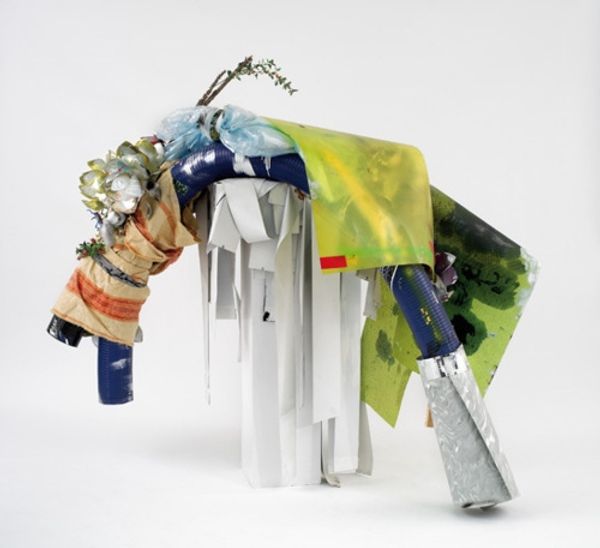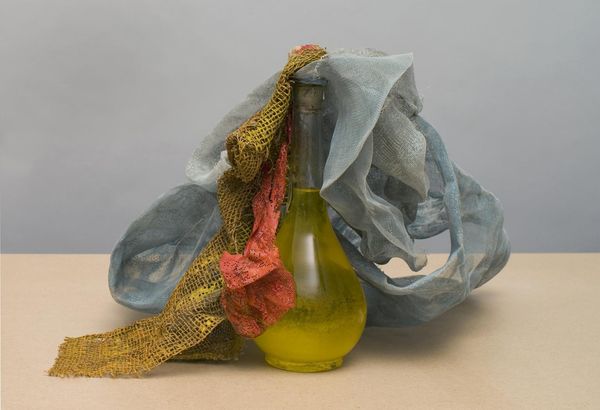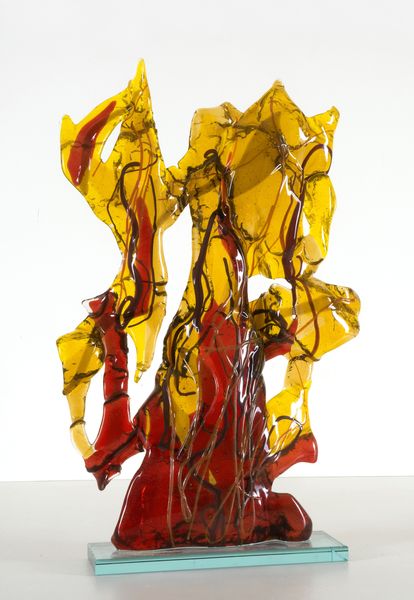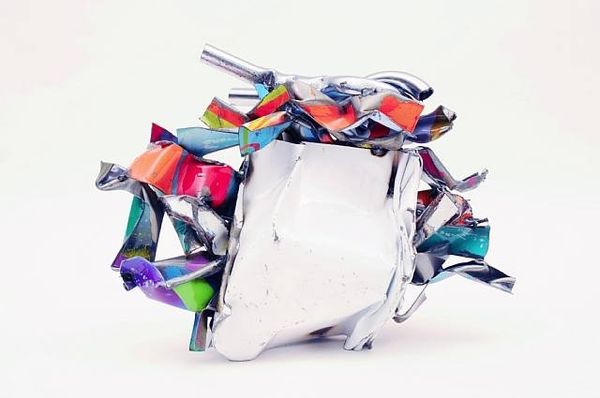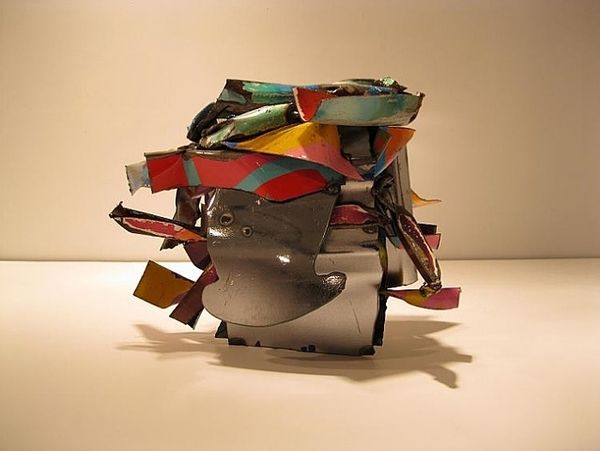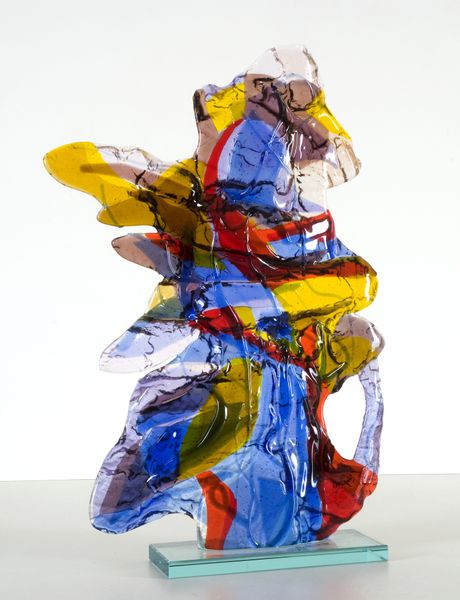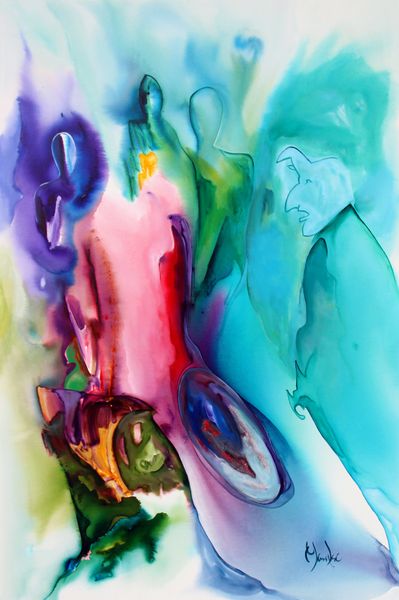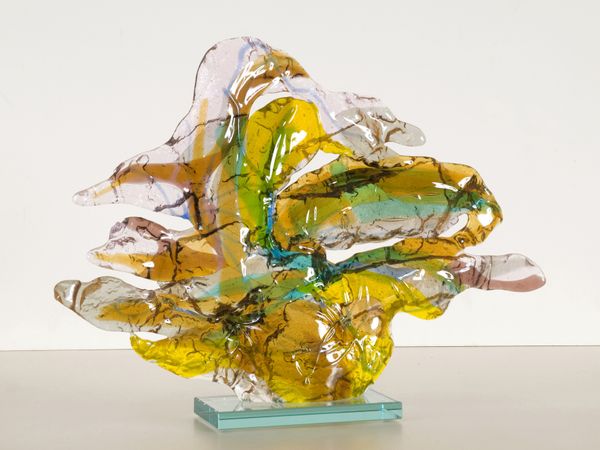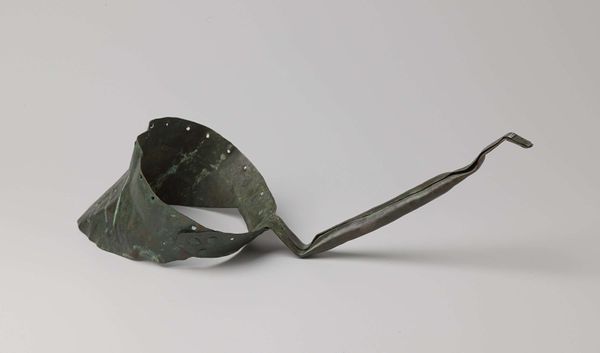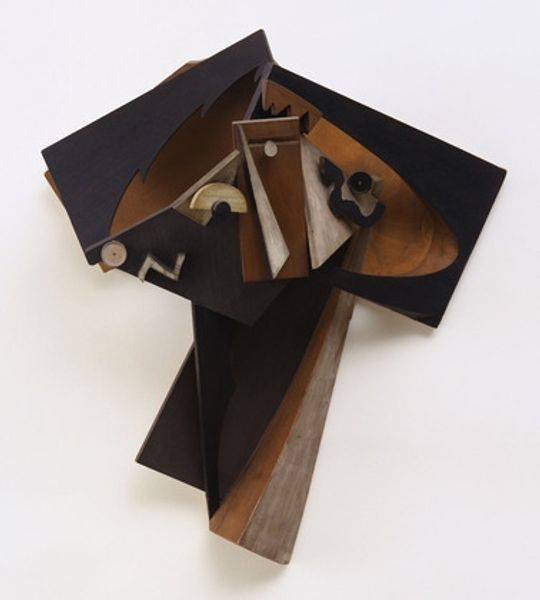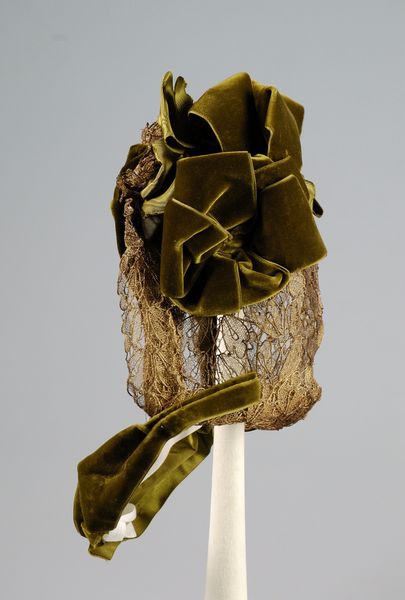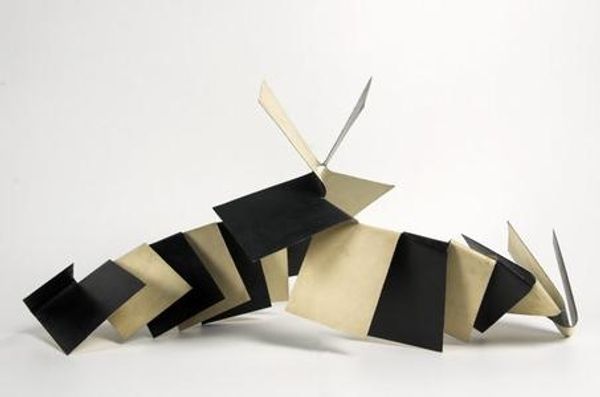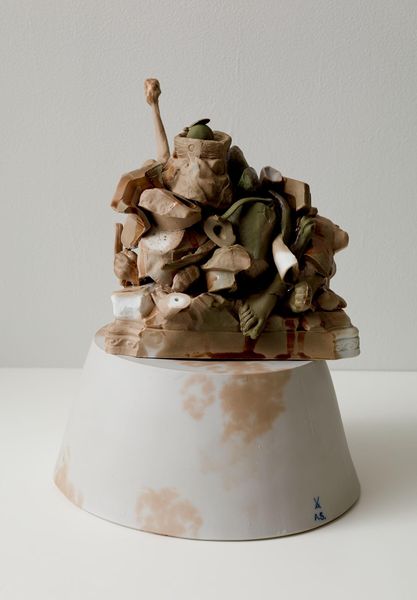
Dimensions: object: 870 x 1410 x 1054 mm
Copyright: © ARS, NY and DACS, London 2014 | CC-BY-NC-ND 4.0 DEED, Photo: Tate
Editor: This is "Kora" by John Chamberlain. It looks like it's made from crushed metal. The colors are so vibrant against the distressed texture. What do you see in the composition of this piece? Curator: I observe a dynamic interplay of forms, an assemblage that resists easy categorization. Note how the artist manipulates the surfaces, creating tension between the industrial origins of the materials and their transformation into an aesthetically compelling object. Editor: It's so abstract. Does it have a center, or is it meant to be viewed from all angles? Curator: The work challenges our conventional understanding of sculpture. Its beauty arises not from representation but from the interplay of color, texture, and the inherent qualities of the medium. The lack of a clear focal point encourages a circumnavigation of the object. Editor: I never thought about the material itself being the subject. Thanks for highlighting that! Curator: Indeed. Chamberlain compels us to consider the formal possibilities within found objects.
Comments
Join the conversation
Join millions of artists and users on Artera today and experience the ultimate creative platform.
tate 8 months ago
⋮
Kora 1963 is a large sculpture consisting of various irregular steel sections that form a broadly fan-like shape, starting narrowly at the bottom and widening at the top. The metal sheets are all single-coloured in lilac purple, chocolate brown and various tones of green (mint, avocado, lime and dark moss), with both plain and metallic finishes, while some are uncoloured, retaining their bare polished surfaces. It is immediately apparent that these are car parts, faceted and fragmented, with visible signs of wear and tear including rust and scratch marks. The sections have been bent, crushed and twisted and then bolted and welded together to form a dramatic abstract shape. The piece is not inscribed by the artist and requires a large, low plinth when displayed.
